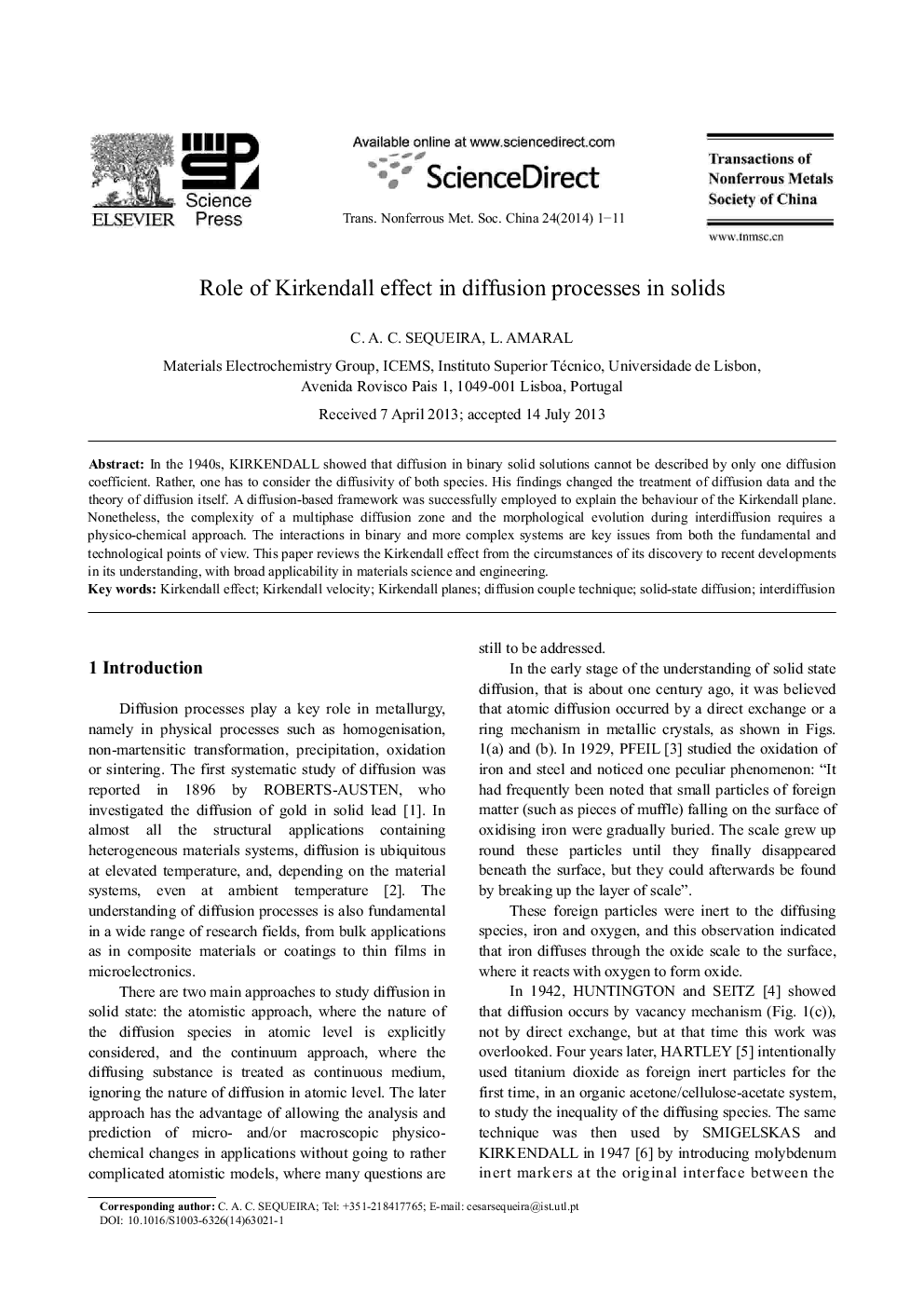| Article ID | Journal | Published Year | Pages | File Type |
|---|---|---|---|---|
| 1635895 | Transactions of Nonferrous Metals Society of China | 2014 | 11 Pages |
In the 1940s, KIRKENDALL showed that diffusion in binary solid solutions cannot be described by only one diffusion coefficient. Rather, one has to consider the diffusivity of both species. His findings changed the treatment of diffusion data and the theory of diffusion itself. A diffusion-based framework was successfully employed to explain the behaviour of the Kirkendall plane. Nonetheless, the complexity of a multiphase diffusion zone and the morphological evolution during interdiffusion requires a physico-chemical approach. The interactions in binary and more complex systems are key issues from both the fundamental and technological points of view. This paper reviews the Kirkendall effect from the circumstances of its discovery to recent developments in its understanding, with broad applicability in materials science and engineering.
